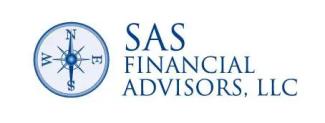
Markets, Poverty Rates, and the Recall
Headlines last week discussed the change in the financial outlook of Social Security. The link below digs deeper into the methodology and impact of this analysis. Here is a link to the Center for Retirement Research at Boston College, one of the most objective think tanks focusing on Retirement. We recommend taking a look at their website if you are interested in this topic.
The stock market stalled last week after week after week of advances setting records for the Dow, S&P 500, as well as the Nasdaq. Markets never advance without periodic pullbacks so last week was no surprise. The typical investor behavior on market declines over the past 10 years has been to buy in the dips. Only hindsight provides the answer to whether that was the best strategy. Investors, so far, are trained to buy dips. Timing markets continues to be problematic however, longer term-10 year indicators- point to modest equity returns.
Government measurements of poverty rates in 2020 fell substantially as a result of federal government aid. Measurements discounting federal aid show poverty rates in 2020 increased- no surprise. Poverty is described as annual income below $26,200 for a family of four. The HUD definition of poverty in SF Bay Area is $117,400. The federal definition of poverty at $26,200 is nationwide and applies to SF as well. Imagine living in SF with an income of $26,200 for a family of four. Yes, we live in a bubble and yes it is important to appreciate the gifts and blessings we have.
The results of the California recall vote are in and Gavin Newsom decidedly defeated the recall attempt. Approval of California voters for his strategy for handling Covid-19 seemed to be decisive in voters. Let’s hope we continue to make progress in controlling the pandemic. Today, the FDA determined that the administered vaccines continue to be effective in preventing severe disease, hospitalization and death.
Democrats are finalizing their economic package to be passed through a special legislative process called Reconciliation. There is a ways to go before final passage but one proposal would eliminate a strategy called the “Mega Backdoor Roth,” a strategy that allows corporations to permit after tax contributions to your 401k and convert those contributions to individual Roth IRAs. Two individuals contributed to potentially spoiling this opportunity- Mitt Romney when he ran for President revealing millions in his Roth IRA and Peter Thiel who it was also revealed he had a Roth IRA with a value of $5B- that’s billions.
Another concern for markets is the need for Congress to raise the debt ceiling. This need has led to previous government shutdowns and hopefully not this time.
Work Culture
The “rise and grind” culture a lot of us can relate to has gotten a closer look by most as a result of the pandemic, working from home and the blurred lines between balancing it all. For those of you who have figured out your ideal balance, share your wisdom! Let us know what has worked and influenced you to do different. The American work culture has deep roots and will undoubtedly take us some time to ‘unlearn’ the pieces that we do unconsciously but that don’t serve us in ways we need to thrive.
Along with work culture comes the question of why we push ourselves to such limits. What is the driver behind the “grind”? Take note especially of the ‘holistic approach’ take this article describes and how it relates to our work with you.
This website is informational only and does not constitute investment advice or a solicitation. Investments and investment strategies recommended in this blog may not be suitable for all investors. SAS Financial Advisors, LLC and its members may hold positions in the securities mentioned within this newsletter.

